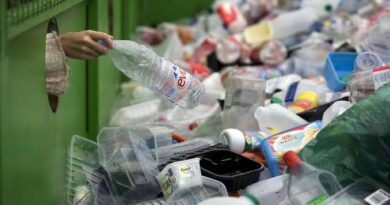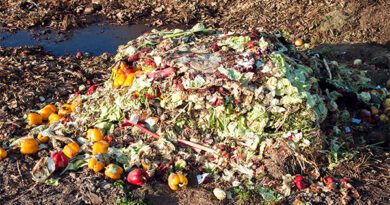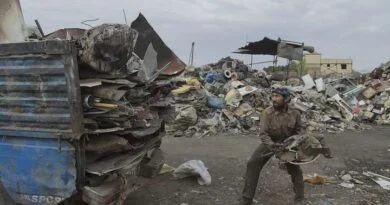How to Make Biofuel from Waste Materials
Biofuel, often known as organic matter, is any fuel that comes from biomass. The term “animal waste” encompasses any type of plant or algal material, including wood. They are regarded as renewable sources of energy since these fuels are continuously supplied organically over the life cycle.
They are therefore a desirable replacement for fossil fuels like coal, oil, and natural gas. These compounds need to be created over thousands of years and then removed from the earth utilizing pricy and harmful procedures.
Fossil fuel reserves on the planet will eventually run out, especially if we keep using them at the current rate of depletion. They are also being used up much faster than they are being produced.
The production of basic biofuels is a straightforward scientific procedure. They are merely grown, collected, and burned without any kind of processing.
On the other hand, secondary biofuels are a far more complicated creature. Concentrating on the two most popular liquid biofuels utilized in the transportation sector might be useful in order to streamline the situation.
This article will examine the process used to create biofuels from human waste.
Landfilling garbage can cause ozone layer depletion, water pollution, and soil erosion. Consequently, landfilling has a negative impact on the ecosystem.
Read Also : Waste Characterization and Analysis
Numerous methods have been used to turn garbage into an energy source in order to lessen the harmful effects that waste has on the environment, including incineration, anaerobic digestion, biodegradation, liquefaction, pyrolysis, and many others.
This energy source typically exists in the liquid or gaseous state and takes the form of biofuels. A blend of fatty acids from animal fat is used to make biofuels.
Fast pyrolysis is the primary method utilized in 2006 to turn biomass into biofuels. It was shown that the largest amount of liquid and gas products during pyrolysis are produced at low temperatures and at high temperatures, respectively.
Liquefaction, catalytic oxidation, and biological degradation are a few examples of the various conversion methods that can be applied as technology develops.
Because of liquefaction, biomass can have a high water content, which lowers the cost and energy required to turn it into energy. Using catalytic oxidation, 99.5% of SO2 and 90% of Hg could be eliminated.
This indicates that catalytic oxidation has a low cost of production, a high gas removal efficiency, and produces little pollution. The polymers can totally break down into byproducts like water thanks to biodegradation.

According to the Food and Agriculture Organization of the United Nations, almost a third of all food produced for human consumption is lost or wasted, amounting to 1.3 billion tons annually or a loss of around $161 billion. In only the United States, garbage totals thirty million tons annually.
Since decades, scientists have been able to create liquid and gaseous fuels from food waste, employing a variety of techniques and with variable degrees of effectiveness. Hydrothermal liquefaction, a more recent procedure, offers a viable alternative but also has problems.
Through this procedure, moist biomass (such as leftover food) is put in a reactor that resembles a pressure cooker and subjected to high temperatures and pressures. In these circumstances, the hydrocarbons in the biomass decompose to create a biofuel resembling crude oil.
Although the idea of using food waste to make biofuels is not new, the current pricey and labor-intensive procedures have not been widely adopted.
Michael Timko, an associate professor of chemical engineering, reports on efforts made by a group of colleagues to greatly increase the yield of oil from the waste food conversion process while simultaneously boosting efficiency in a research that was published in the open-access journal Energies.
Using food waste as a source for biofuels involves:
▪ Inside the mixing tank, the different types of food waste are collected from kitchens, college dorms, hotels, etc. and combined with a 2:1 ratio of water. That creates the slurry.
▪ The input chamber is used to feed the slurry into the digester.
▪ When the digester (container) is halfway full, the inflow of slurry is halted, and the plant is left idle for roughly 30 to 40 minutes.
▪ An anaerobic bacterium present in the slurry breaks down or ferments the food waste over these 30 to 40 days while there is water present.
▪ Biogas is created as a result of anaerobic fermentation and begins to assemble in the digester’s dome.
▪ As more and more biogas builds up, the pressure it exerts pushes the used slurry into the exit chamber.
▪ The used slurry overflows from the exit chamber into the overflow tank.
▪ From the overflow tank, the used slurry is removed carefully and used as plant manure.
▪ When a supply of biofuels is needed, the gas valve attached to a network of pipelines is opened.
▪ A running plant can be fed continually with the prepared slurry to obtain a constant supply of biofuels.
In addition to being helpful in managing garbage, anaerobic digestion is a multistep biological and chemical process that also helps create energy.
Anaerobic digestion involves the processes of hydrolysis, acidogenesis, acetogenesis, and methanogenesis. These are the four basic steps. Throughout the whole procedure, chemicals and microbes break down the big organic polymers that make up biomass into smaller ones.
After the anaerobic digestion procedure is complete, the biomass is transformed into dig estate and wastewater as well as biogas, which includes carbon dioxide and methane.
Read Also : How to Make Money from E-Wastes
Waste products, such as sewage sludge, industrial waste, wasted cooking oil, etc., are free raw resources that can be used to produce biofuels, reducing the problem of waste generation, treatment, and disposal.
The use of kitchen garbage for the generation of biodiesel has been pioneered in this study using a novel approach. Free fatty acid methyl ester concentration by comparing biodiesel’s physical and chemical qualities with various criteria, it was determined that they satisfied requirements.
In conclusion, water bodies that receive waste water must be treated to lower the chemical oxygen demand and sulfate content. This treatment results in the release of biogas that can be used for home purposes.
To describe the current state of the growth of the biofuels industry in relation to the production of ethanol from food waste, the Following are the benefits:
▪ Boost rural income while ensuring women’s empowerment.
▪ Create jobs in the countryside.
▪ Encourage the use of renewable energy by utilizing the energy from biofuels.
▪ Reduce the nation’s/oil state’s import expenditures encourage the availability of organic manure
▪ Reduce hazardous emissions when burning biofuel, which has essentially no sulfurous compounds.
▪ Reduce greenhouse gas emissions by using fuel based on plant oils instead of fossil fuels



